A few months ago, I received an email from Richard S. who said that, in 1941, his grandfather had given German spy Josef Jakobs his “last ride of freedom” on his milk float from Dove House Farm to the Ramsey Police Station. I suspected that Richard might be the grandson of Harry Godfrey as I thought that it was his horse-drawn cart upon which Josef was conveyed to the police station. Imagine my surprise when Richard said his grandfather was actually Norman Ward, a gentleman of whom I had never heard! I had always suspected that there were more individuals present during the capture of Josef Jakobs, but never really had any proof. The police reports seem to have focused on a few key eye-witnesses (Home Guard and farmers), leaving out the many other workers and deliverymen who may have been present.
According to Richard, Norman was a dairy farmer and businessman from Bury, which is just southwest of the village of Ramsey. A few years before his death, when Richard was in his late teens, Norman shared his experience with the German spy.
Norman was delivering milk with his horse-drawn milk float (cart) in the Ramsey Hollow area on the morning of 1 February 1941. He was asked, presumably by members of the Ramsey Home Guard, to help transport the injured Josef Jakobs to the local police station. Norman said that he knew what would happen to Josef the moment he picked him up (i.e. execution). Norman chatted with Josef a bit, but I imagine it would have been a difficult conversation given Josef’s poor English skills and the amount of pain he was in due to his broken ankle.
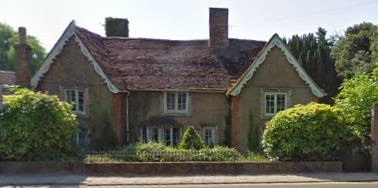
(Image from Google Streetview)
Richard’s sister recalls that Norman and the milk float may have stopped at Dr. Willem Hertzog’s house enroute to the police station. This doesn’t quite jive with the MI5 files and police reports which note that Dr. Hertzog was called to attend the prisoner once Josef had arrived at the Ramsey Police Station.
I did some digging and was able to find a bit more information about Norman Ward. Thanks to Richard for filling in some of the blanks!
Lincolnshire Farmers
Albert Norman Haynes Ward was born 12 September 1912 in Deeping St. James, Lincolnshire, just north of Peterborough. His parents were Albert Webster Ward and Sarah Haynes, both natives of Lincolnshire. Norman came from a long line of farmers with both his father (Albert) and grandfather (Richard) having worked the fens of Lincolnshire, although migrating south from Agarkirk to Crowland and finally to Deeping St. James.
Norman’s parents married in 1898 and the couple had several children over the next decade and a half: Doris May (1900), Mildred Annie (1904), Nora Adline Sara (1908), Mabel Elizabeth (1910), Albert Norman (1912) and Margaret A. (1914). With a bevy of sisters, it’s understandable that Norman was tapped to help his father with the farm work. The Ward family lived at The Priory farmhouse (now St. Benedict’s Priory) but by 1919, the farm had passed on to Richard’s other son, John Edward Ward. He, unfortunately, passed away in 1920 and the farm quickly passed out of the Ward hands.

(Image from Country Life site)
Moving to the Green Dragon
While the Ward clan had deep roots in the Lincolnshire fens north of Peterborough, in 1918, perhaps in anticipation of the The Priory farm changing hands, Albert and Sarah moved their family to The Manor House in Bourne, Lincolnshire. A few years later, in 1925, Albert and family moved to Bury where they took up residence in a thatched pub called The Green Dragon. The pub had shuttered its doors several years previously, but had a plot of land out back which was ideal for a small farm. As Norman grew older, he took on more of the farming duties and eventually expanded the farm by buying more land and ultimately turning the operation into a dairy farm. The former Green Dragon burned down in the 1930s and when it was rebuilt, Norman renamed it Grenfell Farm.

(Photo courtesy of Richard S. Used with permission. All rights reserved)
I had a look for Grenfell Farm on modern maps, but it no longer exists. Some old topographic maps show that the former Green Dragon Pub (and later Grenfell Farm) was located on Upwood Road, just southwest of the intersection of Upwood Road and Bury Road. when RAF Upwood was constructed, the authorities cut down some trees on Norman’s property in order to make room for the airfield. Many years after the war, Norman sold the farm so that it could be developed into a housing estate. He retired a wealthy man and there is even a road named after him in the estate – Ward Close.

The Green Dragon (P(ublic) H(ouse) is located in the upper left corner.
Wartime
In the second quarter of 1939, several months before war was declared, Norman married Dulcie Florence Fuller. The couple settled in at Grenfell Farm and continued to produce milk for the neighbouring communities.

(Photo courtesy of Richard S. Used with permission. All rights reserved)
Norman and Dulcie didn’t have any children until after the end of the war. Although Norman was not called up for active duty due to the fact that he was deaf and worked in a reserved occupation (agricultural worker), he did serve as an Air Raid Warden. According to Richard, the Ward family had an air raid shelter at the farm, probably a necessity given its proximity to RAF Upwood, a possible target for German bombers. The Luftwaffe apparently did try to bomb RAF Upwood at one point, but miscalculated and hit the village of Ramsey instead. A reference to the bombing on 22 August 1942 noted that several buildings were demolished with seven people killed and a number of others injured. Sadly, life next to an RAF airfield could also be dangerous due to friendly fire. A few months after the Ramsey bombing, in October 1942, a Wellington bomber departing RAF Warboys had a signal flare on board catch fire. The crew bailed out and the aircraft went down in the village of Somerham, just southeast of Warboys killing eleven residents, including three generations of one family.
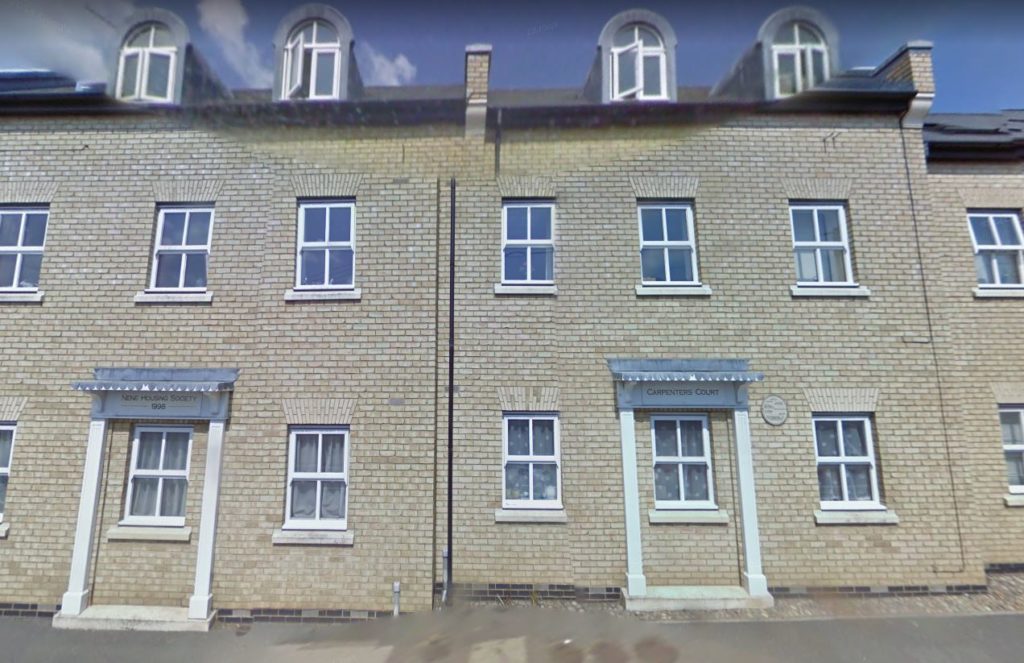
(Image from Google Streetview)
Norman’s parents Albert and Sarah, as well as a couple of younger siblings, moved to a house just around the corner on Bury High Street. The new house was called The Gables and I must admit to being rather confused as there are no less than three houses named The Gables within Ramsey and Bury. The oldest, a medieval building, is located at the intersection of School Lane and Ramsey High Street and is the former residence of Dr. Willelm Hertzog, the physician who attended Josef Jakobs. There is also another house called The Gables just two houses north of the Shell petrol station at the intersection of Upwood and Bury roads. And finally, the house in which Norman’s parents lived is just opposite the intersection of Bury High Street and Greenwood Close. According to Richard, Norman built this house for his parents, likely some time in the mid 1930s. The 1939 National Registration notes that Albert and Sarah were living in The Gables with their two youngest daughters, Mabel and Margaret. Albert was a retired farmer and the women all worked on domestic or home duties.
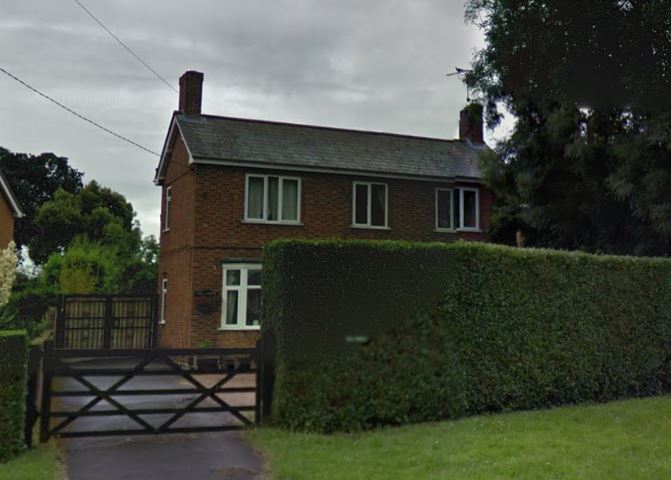
(image from Google Streetview)
A year after the war, in the second quarter of 1946, Norman and Dulcie welcomed a daughter, Norma D. Ward into their lives. Norma would go on to marry William S. in 1972 and have two children, Richard and his sister Amy.
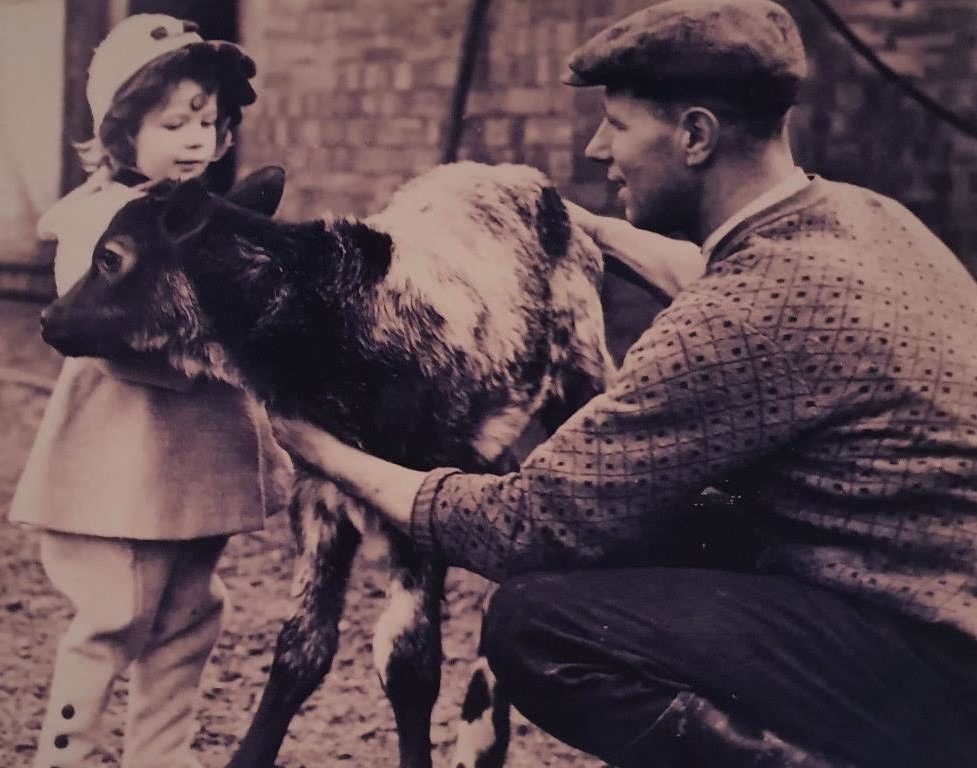
(Photo courtesy of Richard S. Used with permission. All rights reserved)
A Generous and Kind Farmer
Norma, who is still alive, remembers that, after the war, milk from Norman’s dairy farm was flown out of the Upwood airfield destined for Germany. It’s quite likely that some of Ward’s Grenfell milk churns are still rolling around Germany. Norman was an exceedingly generous man and would often leave free milk on the doorstep of families you couldn’t afford to pay for it. Norma still gets stopped in the street and thanked for the kindness of her father. Norman apparently had great respect for the Germans, less so for the French.
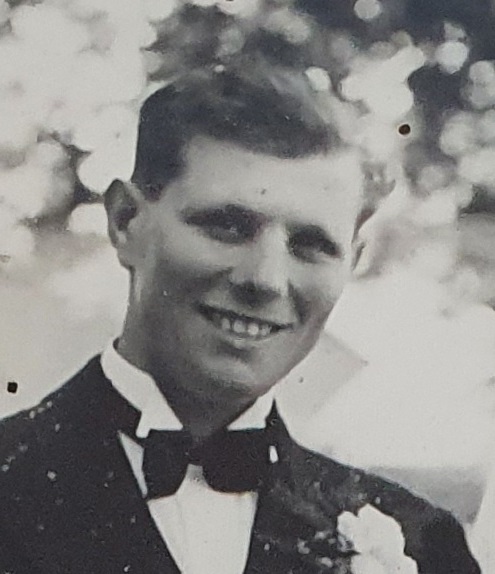
(Photo courtesy of Richard S. Used with permission. All rights reserved)
Norman passed away in 1994 having outlived his wife Dulcie by four years. Richard says that his grandfather was his best friend and his passing left a big hole in his life. I’m grateful that Norman chose to share some of the Josef Jakobs story with his grandson. So many stories have been lost over the years as the older generation passes away. According to Richard, Norman felt guilty about his role in Josef’s capture. But he also knew that it was war and that we were all human. I hope that Norman experienced some relief after sharing his experience with Richard. I, for one, am grateful that Josef encountered such caring individuals as he began his journey to the firing squad.
Acknowledgements
Many thanks to Richard S. for reaching out and opening up another piece of history surrounding Josef Jakobs.
Sources
1902 Bury Map – National Library of Scotland
1926 Bury Map – National Library of Scotland
1952 Bury Map – National Library of Scotland
1926 Ramsey Map – National Library of Scotland
1952 Ramsey Map – National Library of Scotland
British History site – history of Bury
Ancestry – genealogical records.
